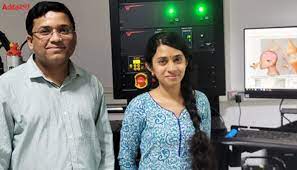
Artificial Synapse for Brain-Like Computing Developed by Indian & Australian Scientists: In order to create hardware for neuromorphic computing, a group of scientists at the Jawaharlal Nehru Centre for Advanced Scientific Research (JNCASR), an independent organisation of the Department of Science and Technology, Government of India, in Bengaluru, used their expertise in nitride-based materials. They used ScN to develop a device mimicking a synapse that controls the signal transmission as well as remembers the signal.
January 2023 Current Affairs Quiz
Scandium nitride (ScN), a semiconducting material with exceptional stability and CMOS compatibility, has been employed by researchers to create brain-like computing. This invention can provide a new material for stable, CMOS-compatible optoelectronic synaptic functionalities at a relatively lower energy cost and hence has the potential to be translated into an industrial product.
Artificial Synapse for Brain-Like Computing Developed by Indian & Australian Scientists- Background
- Traditional computers have physically separated memory storage and processing units. As a result, it takes enormous energy and time to transfer data between these units during an operation.
- In contrast, the synapse (the junction between two neurons) in the human brain serves as both a processor and a memory storage device, making it a superior biological computer that is both smaller and more effective.
- In the current era of artificial intelligence, the brain-like computing approach can help meet the escalating computational demands.
- The development of neuromorphic hardware aims at mimicking a biological synapse that monitors and remembers the signal generated by the stimuli.
- Scientists have been trying to create an artificial synaptic device that does not suffer from RC delays, exhibits large bandwidth, consumes low energy, and is stable, scalable, and CMOS-compatible.
Artificial Synapse for Brain-Like Computing Developed by Indian & Australian Scientists- Roles
This work by Dheemahi Rao and team demonstrates an artificial optoelectronic synapse with ScN thin films that can mimic synaptic functionalities like short-term memory, long-term memory, the transition from short-term to long-term memory, learning–forgetting, frequency selective optical filtering, frequency-dependent potentiation and depression, Hebbian learning, and logic-gate operations.





